Biolayer interferometry (BLI) is a powerful analytical technique. Based on optical interference, its label-free nature makes it ideal for high-throughput analysis of multiple types of samples.
An additional layer of biomolecules modifies the light phase as it passes through. This generates an interference pattern that provides real-time information on binding affinity and interaction kinetics.
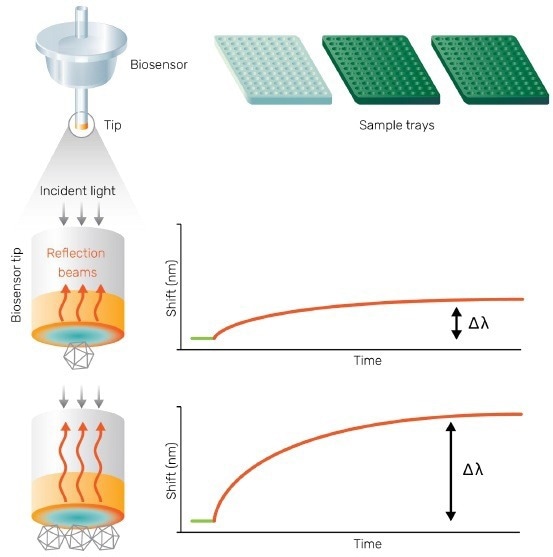
Figure 1. Principle of BLI. Image Credit: Gator Bio, Inc.
Ensuring vector consistency and quality is critical to the success of gene therapies, but several key challenges persist. These include:
- Accurate determination of titer and full/partial percentage in crude samples
- The widespread use of multiple techniques to characterize viral and lipid particles
- Easy rank ordering of titers and % full during purification in manufacturing
This article discusses an easy, accurate, automated method that meets these challenges.
BLI assays are highly precise and accurate, compatible with various matrices, require minimal hands-on time, and can be easily implemented to measure titer and % full across the whole manufacturing cycle from harvest to final product.
AAV analytics
AAV CAPSID TITER
AAVX probes and HS AAV kit from Gator Bio can capture various serotypes of AAV with a dynamic range of 1x107 to 1x1013 vp/mL.
Crude sample titer using high sensitivity AAV kit

Image Credit: Gator Bio, Inc.

Figure 2. Standard curve for AAV5 generated using HS AAV probe. Image Credit: Gator Bio, Inc.
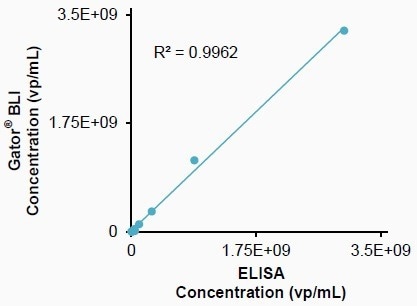
Figure 3. Correlation between HS AAV9 and ELISA on quantification of AAV9. Image Credit: Gator Bio, Inc.
Table 1. HS AAV Kit performance in different matrices. Source: Gator Bio, Inc.
| Titer |
5.33x107 of AAV5 |
1x109 of AAV8 |
| MatrixInterference |
% Recovery |
HEK293TLysate*
(~100 mg/mL of intracellular proteins from 1x108 cells/mL of HEK293T cell suspended in PBS, 1:10 dilution in buffer) |
80.18% |
115% |
Cell LysisBuffer
(1X PBS, 100mM NaCl, 0.001% Pluronic) |
96.31% |
119% |
Spent Media
(DMEM media, 10% FBS, 2mM L-Glutamine) |
84.08% |
110% |
Purified sample titer using AAVX probes
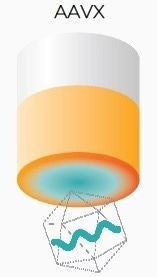
Image Credit: Gator Bio, Inc.
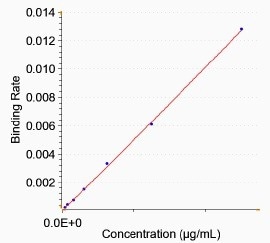
Figure 4. Standard curve for AAV2 generated using AAVX probe. Image Credit: Gator Bio, Inc.

Figure 5. Correlation between AAVX and ELISA on quantification of AAV9. Image Credit: Gator Bio, Inc.
Determination of AAV empty to full (E/F) ratios
The AAV Ratio Kit determines the AAV empty to full ratios through AAV capture, lysis and DNA quantitation.
This BLI format can analyze both crude and purified samples to produce reliable and reproducible results and data.
Table 2. AAV Ratio Kit % full data in crude samples. The complexity of the buffers reduces from Buffer 8 to Buffer 1. Source: Gator Bio, Inc.
| % Full |
% Difference between expected and measured values |
| Buffer 1 |
Buffer 2 |
Buffer 3 |
Buffer 4 |
Buffer 5 |
Buffer 6 |
Buffer 7 |
Buffer 8 |
| 90 |
9% |
4% |
2% |
14% |
13% |
18% |
6% |
10% |
| 75 |
12% |
13% |
3% |
24% |
18% |
17% |
8% |
19% |
| 60 |
2% |
1% |
15% |
28% |
4% |
3% |
13% |
17% |
| 45 |
5% |
12% |
6% |
19% |
10% |
0% |
19% |
19% |
| 30 |
2% |
22% |
9% |
12% |
8% |
8% |
11% |
12% |
| 10 |
27% |
33% |
40% |
5% |
9% |
11% |
38% |
3% |

Determination of AAV empty to full ratios
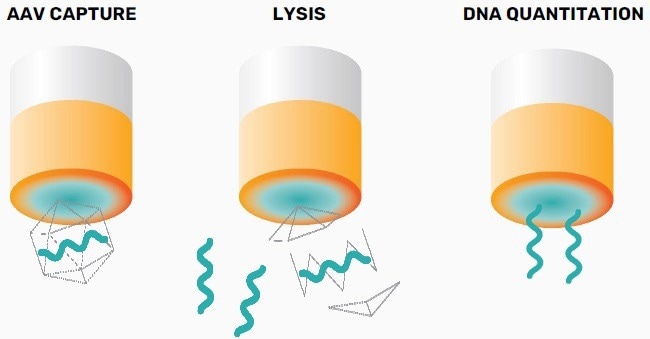
Image Credit: Gator Bio, Inc.

Figure 6. Standard curve for % full capsids in an AAV2 sample. Image Credit: Gator Bio, Inc.
Table 3. Gator Bio AAV Ratio Kit compared to existing methods. Source: Gator Bio, Inc.
| |
Crude sample compatibility |
Assay time |
Automated |
| Gator AAV Ratio Kit |
Yes |
24 samples in 120 minutes |
Yes |
| Analytical Ultracentrifugation (AUC) |
No |
6 hours |
No |
| Transmission Electron Microscopy (TEM) |
No |
3-6 hours |
No |
| DLS-UV/vis (Stunner) |
No |
96 samples in 1 hour |
Yes |
| Mass Photometry (Refyn) |
No |
5 minutes per sample |
Yes |
| Simple Western(Protein Simple) |
Sample prep required |
24 samples in 5 hours |
Yes |
| Charge Detection Mass Spectrometry (CDMS) |
No |
2 hours |
No |
| Size Exclusion Chromatography - Multi Angle Light Scattering (SEC-MALS) |
No |
30 mins per sample |
Yes |
Analyzing non-viral vectors
Kinetics of pegylated lipid nanoparticles
Anti-PEG probe captures and quantifies lipid nanoparticles (LNPs). Serum proteins can also be immobilized onto a probe to study their kinetic interactions with LNPs.
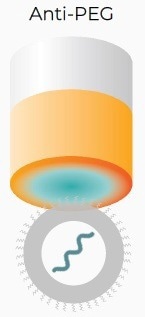
Image Credit: Gator Bio, Inc.
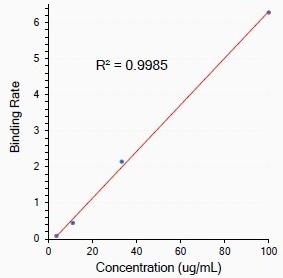
Figure 7. Standard curve for PEGylated LNPs generated using Anti-PEG probe. Image Credit: Gator Bio, Inc.
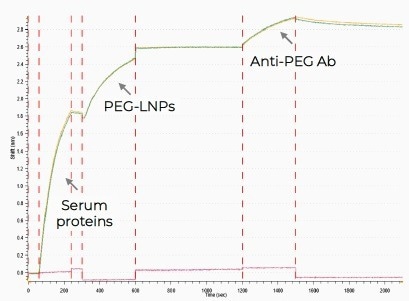
Figure 8. Sensogram showing serum proteins capturing LNPs. Image Credit: Gator Bio, Inc.
Viral-like particles
Probes are tailored to target surface markers, such as biotin or flag tag, to capture viral-like particles (VLPs). The immobilized VLPs can then be used for screening antibodies or ligands against biomolecules embedded in the VLPs.
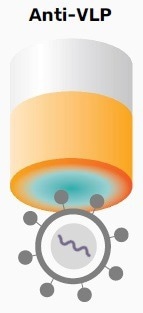
Image Credit: Gator Bio, Inc.
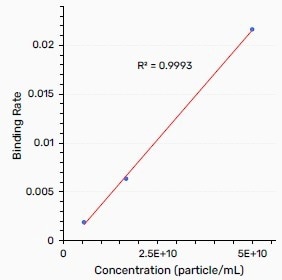
Figure 9. Standard curve for VLPs generated using Anti-VLP probe. Image Credit: Gator Bio, Inc.
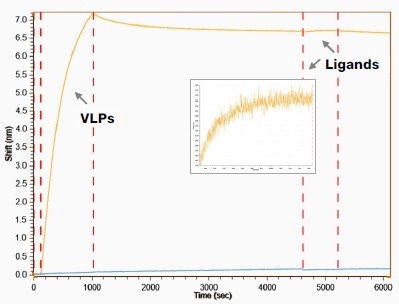
Figure 10. Sensogram showing the capture of VLPs and ligands. Image Credit: Gator Bio, Inc.
Summary
The BLI-based solutions from Gator Bio address key challenges faced in vector production. These solutions are ideal for developing safe, efficacious viral and non-viral vectors for gene therapy and targeted drug delivery.
The benefits include:
- Accurate, precise, and wide dynamic range in both crude and clean matrices
- Accurate empty to full ratio determination, enabling rank ordering during purification
- All AAV assays are compatible with various matrices
- An accurate and easy kinetics platform for both VLPs and LNPs.
About Gator Bio, Inc.
Gator Bio is a world-leading biosensor company headquartered in Palo Alto, CA. At Gator Bio, we provide researchers the tools and instrumentation to advance their research. From antibody engineering to small molecule drug discovery to basic research, Gator Bio can be used to bring meaning to the unknown. From the original inventors of label-free biolayer interferometry (BLI), Gator Bio provides the next generation of BLI technology.
Sponsored Content Policy: News-Medical.net publishes articles and related content that may be derived from sources where we have existing commercial relationships, provided such content adds value to the core editorial ethos of News-Medical.Net which is to educate and inform site visitors interested in medical research, science, medical devices and treatments.